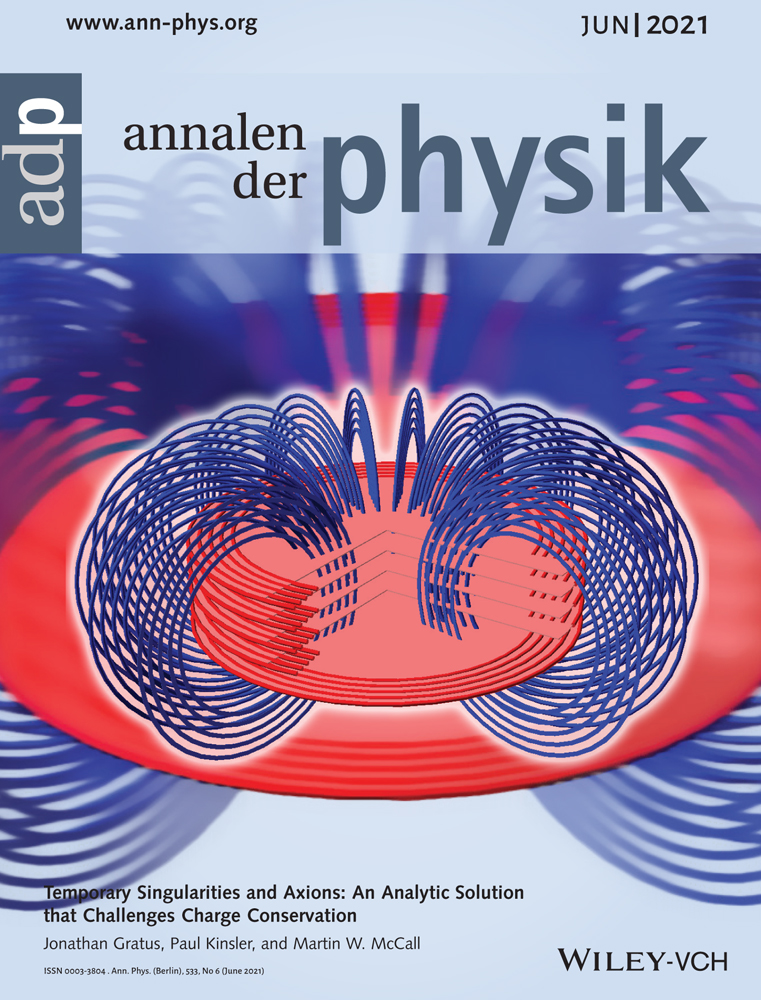Operator Transpose within Normal Ordering and its Applications for Quantifying Entanglement
Corresponding Author
Liyun Hu
Center for Quantum Science and Technology, Jiangxi Normal University, Nanchang, 330022 China
E-mail: [email protected]
Search for more papers by this authorLuping Zhang
Center for Quantum Science and Technology, Jiangxi Normal University, Nanchang, 330022 China
Search for more papers by this authorXiaoting Chen
Center for Quantum Science and Technology, Jiangxi Normal University, Nanchang, 330022 China
Search for more papers by this authorWei Ye
Center for Quantum Science and Technology, Jiangxi Normal University, Nanchang, 330022 China
Search for more papers by this authorQin Guo
Center for Quantum Science and Technology, Jiangxi Normal University, Nanchang, 330022 China
Search for more papers by this authorHongyi Fan
Department of Material Science and Engineering, University of Science and Technology of China, Hefei, 230026 China
Search for more papers by this authorCorresponding Author
Liyun Hu
Center for Quantum Science and Technology, Jiangxi Normal University, Nanchang, 330022 China
E-mail: [email protected]
Search for more papers by this authorLuping Zhang
Center for Quantum Science and Technology, Jiangxi Normal University, Nanchang, 330022 China
Search for more papers by this authorXiaoting Chen
Center for Quantum Science and Technology, Jiangxi Normal University, Nanchang, 330022 China
Search for more papers by this authorWei Ye
Center for Quantum Science and Technology, Jiangxi Normal University, Nanchang, 330022 China
Search for more papers by this authorQin Guo
Center for Quantum Science and Technology, Jiangxi Normal University, Nanchang, 330022 China
Search for more papers by this authorHongyi Fan
Department of Material Science and Engineering, University of Science and Technology of China, Hefei, 230026 China
Search for more papers by this authorAbstract
Partial transpose is an important operation for quantifying entanglement. In this study, the (partial) transpose of any single (two-mode) operator is investigated. Using the Fock basis expansion, it is found that the transposed operator of an arbitrary operator can be obtained by replacing with , rather than the c-number within the normal ordering form. The transpose of the displacement and Wigner operators is also investigated, from which the relation of the Wigner function, characteristics function, and average values such as covariance matrix is constructed between the density operator and transposed density operator. These observations can be further extended to multi-mode cases. As for the application, partial transpose of the two-mode squeezed operator and the entanglement of the two-mode squeezed vacuum through a laser channel is considered.
Conflict of Interest
The authors declare no conflict of interest.
References
- 1M. A. Nielsen, I. L. Chuang, Quantum Computation and Quantum Information, Cambridge University Press, Cambridge, UK2011.
- 2R. Simon, Phys. Rev. Lett. 2000, 84, 2726.
- 3E. Shchukin, W. Vogel, Phys. Rev. Lett. 2005, 95, 230502.
- 4M. Hillery, M. S. Zubairy, Phys. Rev. Lett. 2006, 96, 050503.
- 5H. Nha, J. Kim, Phys. Rev. A 2006, 74, 012317.
- 6G. S. Agarwal, A. Biswas, New J. Phys. 2005, 7, 211.
- 7H. Nha, M. S. Zubairy, Phys. Rev. Lett. 2008, 101, 130402.
- 8P. Marian, T. A. Marian, Phys. Rev. Lett. 2008, 101, 220403.
- 9S. Tserkis, T. C. Ralph, Phys. Rev. A 2017, 96, 062338.
- 10C. H. Bennett, G. Brassard, S. Popescu, B. Schumacher, J. A. Smolin, W. K. Wootters, Phys. Rev. Lett. 1996, 76, 722.
- 11G. Vidal, R. F. Werner, Phys. Rev. A 2002, 65, 032314.
- 12J. Eisert, C. Simon, M. B. Plenio, J. Phys. A 2002, 35, 3911.
- 13G. Adesso, A. Serafini, F. Illuminati, Phys. Rev. Lett. 2006, 92, 087901.
- 14C. Gardiner, P. Zoller, Quantum Noise, Springer, Berlin2000.
10.1007/978-3-662-04103-1 Google Scholar
- 15L. Y. Hu, H. Y. Fan, Opt. Commun. 2009, 282, 4379.
- 16L. Y. Hu, F. Chen, Z. S. Wang, H. Y. Fan, Chin. Phys. B 2011, 20, 074204.
- 17H. Moya-Cessa, Phys. Rep. 2006, 432, 1.
- 18H. Y. Fan, L. Y. Hu, Mod. Phys. Lett. B 2008, 22, 2435.
- 19B. M. Escher, R. L. de Matos Filho, L. Davidovich, Nat. Phys. 2010, 7, 406.
- 20X. L. Hu, D. Li, L. Q. Chen, K. Zhang, W. Zhang, C. H. Yuan, Phys. Rev. A 2018, 98, 023803.
- 21Q. K. Gong, X. L. Hu, D. Li, C. H. Yuan, Z. Y. Ou, W. Zhang, Phys. Rev. A 2017, 96, 033809.
- 22M. O. Scully, M. S. Zubairy, Quantum Optics, Cambridge University Press, Cambridge, UK1997.
10.1017/CBO9780511813993 Google Scholar
- 23E. Wigner, Phys. Rev. 1932, 40, 749.
- 24H. Y. Fan, H. R. Zaidi, Phys. Lett. A 1987, 124, 303.
- 25H. Y. Fan, Representation and Transformation Theory in Quantum Mechanics, Shanghai Scientific & Technical Press, Shanghai 1997, p. 46 (in Chinese).
- 26F. Jia, H. L. Zhang, L. Y. Hu, H. Y. Fan, Int. J. Theor. Phys. 2015, 54, 1283.
- 27C. Weedbrook, S. Pirandola, R. Garcí-Patró, N. J. Cerf, T. C. Ralph, J. H. Shapiro, S. Lloyd, Rev. Mod. Phys. 2012, 84, 621.
- 28G. S. Agarwal, Quantum Optics, Cambridge University Press, UK2012.
10.1017/CBO9781139035170 Google Scholar
- 29F. Jia, K. Z. Zhang, Y. Q. Hu, H. L. Zhang, L. Y. Hu, H. Y. Fan, Acta Phys. Sin. 2018, 67, 150301.
- 30Y. Xia, L. Y Hu, H. Zhang, H. L. Zhang, Optik 2019, 178, 372.
- 31A. Serafini, F. Illuminati, M. G. A. Paris, S. De Siena, Phys. Rev. A 2004, 69, 022318.
- 32G. Adesso, A. Serafini, F. Illuminati, Phys. Rev. A 2004, 70, 022318.
- 33R. W. Rendell, A. K. Rajagopal, Phys. Rev. A 2005, 72, 012330.
- 34P. S. Y. Poon, C. K. Law, Phys. Rev. A 2007, 76, 012333.
- 35P. S. Y. Poon, C. K. Law, Phys. Rev. A 2007, 76, 054305.
- 36H. Y. Fan, H. L. Lu, Y. Fan, Ann. Phys. 2006, 321, 480.
- 37H. Y. Fan, Ann. Phys. 2008, 323, 1502.
- 38H. Y. Fan, J. Math. Phys. 1990, 31, 257.
- 39H. Y. Fan, Commun. Theor. Phys. 1986, 6, 377.
- 40S. L. Zhang, P. van Loock, Phys. Rev. A 2010, 82, 062316.




